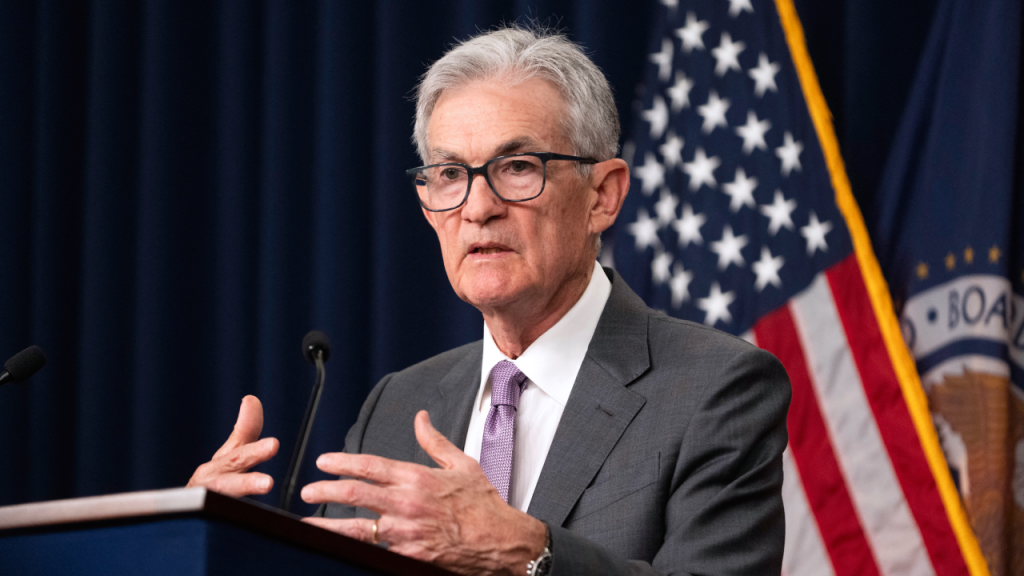Key takeaways
- The Federal Reserve sets interest rates for banks to borrow from each other, which in turn sets interest rates for business loans and lines of credit.
- Lower interest rates can make borrowing costs lower for businesses and make it easier to get approved for loans.
- The Fed rate changes can have a broader impact on businesses, including increasing the employment rate and increasing the money supply for banks, businesses and consumers.
With September’s Federal Reserve meeting seeing a rate cut of 50 basis points, interest rates on business loans and lines of credit will follow, making it cheaper and easier for businesses to borrow money.
With the drop in borrowing costs, the Fed’s cuts can have a broader impact on businesses, encouraging more economic activity, boosting the job market and stimulating business growth, while balancing the need to keep inflation in check.
How the Federal Reserve affects business loans
The Fed’s interest rate sets the base rate that lenders offer to businesses for their loans. As the Federal Reserve interest rate increases or decreases, so do the APR and factor rate for business loans and lines of credit.
For business loans pegged to the prime rate, and especially variable rate loans, there is a direct connection between the Federal Reserve cutting interest rates and the subsequent decline in rates that business borrowers see,
— says Greg McBride, CFA , chief financial analyst for Bankrate
This is one of the ways the Federal Reserve can influence economic activity – with low rates, businesses can borrow more, expand more and hire more people. High rates, on the other hand, can help restrict the supply of money businesses and consumers have access to, which is one of the ways the government can help curb inflation.
Borrowing costs
The interest rate of a business loan or business line of credit plays a large role in how much a business will pay for borrowing. Even if a loan doesn’t have an explicit APR or interest rate, the factor, flat, weekly or monthly rates are all based on the interest rate set by the Federal Reserve.
“Even for loans that aren’t pegged to the prime rate, the general, across the board decline in interest rates will also translate to lower borrowing costs over time,” McBride says.
In July 2024, the average fixed APR for an SBA loan was 13.50 percent on the lower end. A 15-year SBA loan of $300,000, therefore, would come with a monthly payment of $3,894.96 and a total of $401,092.01 of interest paid in addition to the loan’s principal.
A reduction of APR of just .25 percent makes a sizable difference in interest paid. The same $300,000 15-year SBA with a rate of 13.25 percent would require a monthly payment of $3,845.21 and an interest total of $392,137.67 – nearly $9,000 less over the lifetime of the loan.
Fixed and variable-rate business loans
While the federal interest rate sets the interest rates for both fixed and variable business loans, the impact to borrowers is felt in different ways.
For example, , new borrowers of fixed-rate business loans will feel the impact of the rate with the APR, factor, monthly or weekly fee they’re offered. Existing borrowers with a fixed rate, however, will keep the interest rate they agreed to when taking on the loan and keep paying the same amount.
Variable-rate business loans will have the interest rate with the market rate. This means that borrowers may see their monthly or weekly payment change with the federal rate.
Refinancing and consolidation
Borrowers who decide to refinance or consolidate their business loans will see changes to their loan terms in line with the federal rate.
Refinancing or consolidating loans when the federal rate decreases can allow borrowers to take advantage of a lower market rate, possibly lowering their payments and how much interest they pay over time.
Business loan approval
A lower federal interest rate can increase the odds of business loan approval, since the borrower will take on less in borrowing costs.
With a lower interest rate, the monthly or weekly payment will be lower, making the loan less risky for the borrower and lender than a loan with a high interest rate.
Lower interest rates can also allow businesses to borrow more. Less of the monthly or weekly payment is dedicated to interest, allowing businesses to take on a larger loan while keeping the same payments.
How interest rates can affect small businesses
The Federal Reserve uses the interest rate to accelerate or decelerate economic activity. By raising borrowing costs and making loans more expensive, the Fed can help curb growth, decrease the money supply and decrease inflation. Decreasing rates, on the other hand, stimulates economic activity and encourages businesses to expand and hire more workers.
“Assuming the economy continues to grow consistently, lower interest rates make it less expensive for businesses to get loans and that could be the catalyst for starting a business, undertaking an expansion, or ramping up production – a self-reinforcing cycle that boosts economic activity and makes for a favorable business environment,” McBride says.
This can have a broader impact on small businesses, both in terms of the costs outside their loans and in terms of customer and revenue growth.
Consumer confidence and purchasing power
Lower federal interest rates can help stimulate economic activity, which can translate into more cash to burn for customers – and possibly more business.
“Just as lower interest rates make it easier for a business to undertake expansion or ramp up production, it may do the same for that business’s customers,” McBride says. “A materials wholesaler benefits if the contractors they’re selling to are getting more projects.”
Lower borrowing costs can also filter down to consumer debt, lowering payments for those with credit card, student and housing debt.
However, the Federal Reserve also has to strike a balance with inflation. Cheaper borrowing costs means a larger money supply for borrowers and consumers, which can translate into the higher prices that signal growing inflation and that erode customer’s purchasing power.
Employment
More business – and more loans – means businesses hire more and increase the employment rate, giving consumers wages they can use to buy goods and services.
With one in five workers saying that their economic situation having worsened since the Fed began raising rates in 2022, the hot job market of previous years has since cooled – giving employers more leverage in negotiating wages and managing personnel costs.
Will the Federal Reserve keep lowering interest rates?
September’s meeting is the first time the Federal Reserve is cutting interest rates since March 2020, when the Fed cut rates in order to aid the economy in the midst of the coronavirus pandemic. It’s also the first of what is predicted to be a series of cuts for the remainder of 2024 and throughout 2025.
“The cumulative effect of lower rates will grow as the Fed further reduces interest rates in the months ahead, so borrowers could see a meaningful difference in borrowing rates this time next year than what is seen today,” McBride says.
When will the next Federal Reserve meeting be?
The next Federal Reserve meeting will be on November 6 and 7, 2024.
After that, the last Fed meeting of the year will take place on December 17 and 18, and will include a Summary of Economic Projections, which will provide insight for the Fed’s projected rate changes for the first quarter of 2025 and future years.
How to manage business loan payments with high rates
While the Federal Reserve rate is lower than it was in July 2023, borrowers are still paying higher interest rates than before the Fed began raising rates in 2022.
Businesses waiting for the next cut as they manage their high-interest loans can a few steps to make their loans more affordable, such as:
- Shopping around for other lenders. Rate shopping between lenders and finding the best possible APR or factor rate for a business loan can help save on payments, and borrowing and closing costs.
- Cutting operating costs. This can involve letting go of personnel, reducing production costs or moving to a less expensive location.
- Refinancing or consolidating. You may be able to lower your monthly payment or get a better interest rate by refinancing or consolidating your business debt.
- Talking to your lender. If you’re struggling to make payments, talking to your lender before you miss a payment can allow you to set up an alternative payment plan.
- Looking into alternative financing options. You may be able to raise capital for your small business by equity financing from investors, using personal funds or applying for grants.
The bottom line
With the Federal Reserve cutting rates for its September meeting, business loan rates will decrease, making it cheaper for businesses to borrow money. While fixed-rate business loans will retain their APRs and factor rates, variable loans, as well as new loans and lines of credit will see a drop in borrowing costs due to the Fed cuts. This allows more businesses to save on their payments and encourages growth in the job market and business sector.
Read the full article here
















